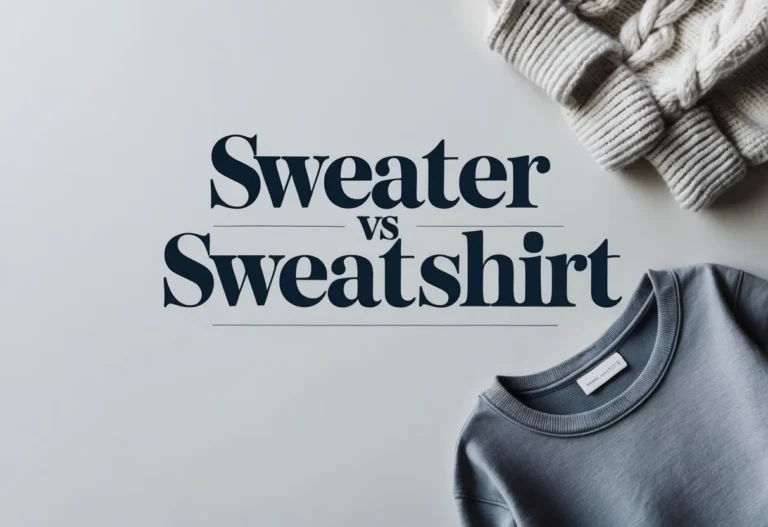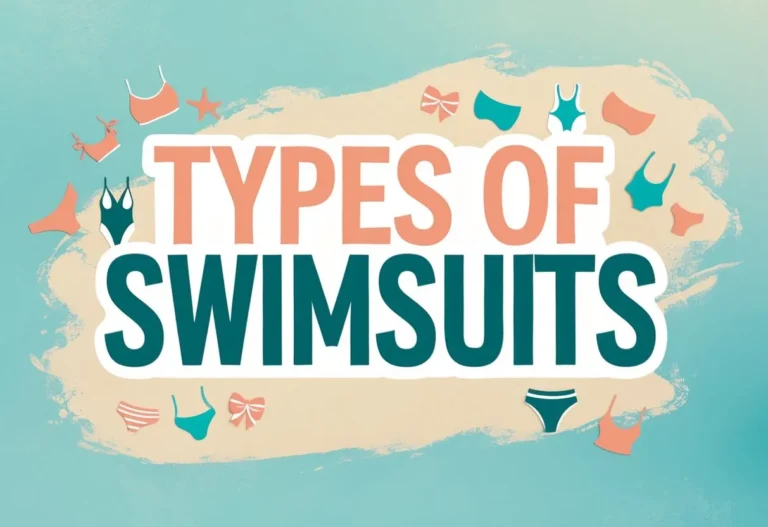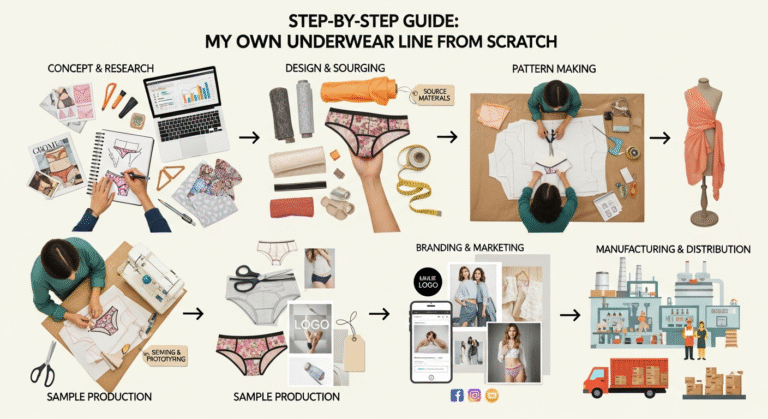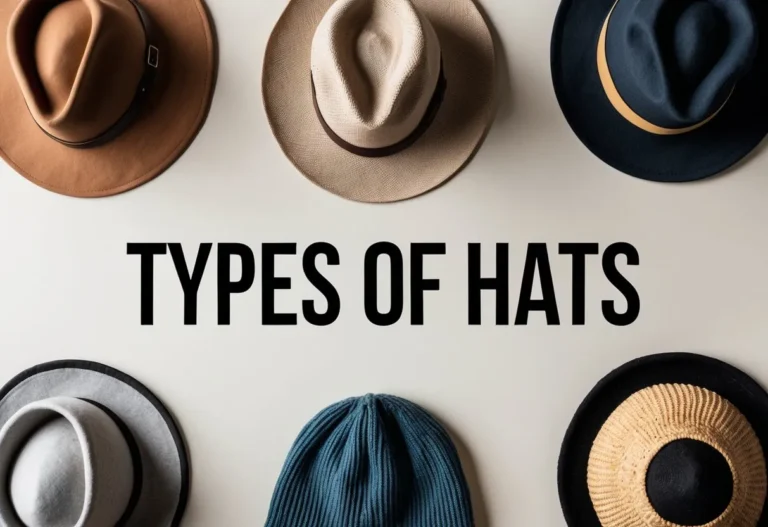Panties come in many styles designed to fit different needs, body shapes, and occasions. Knowing the types of panties can help someone find the most comfortable and suitable option for everyday wear or special outfits.
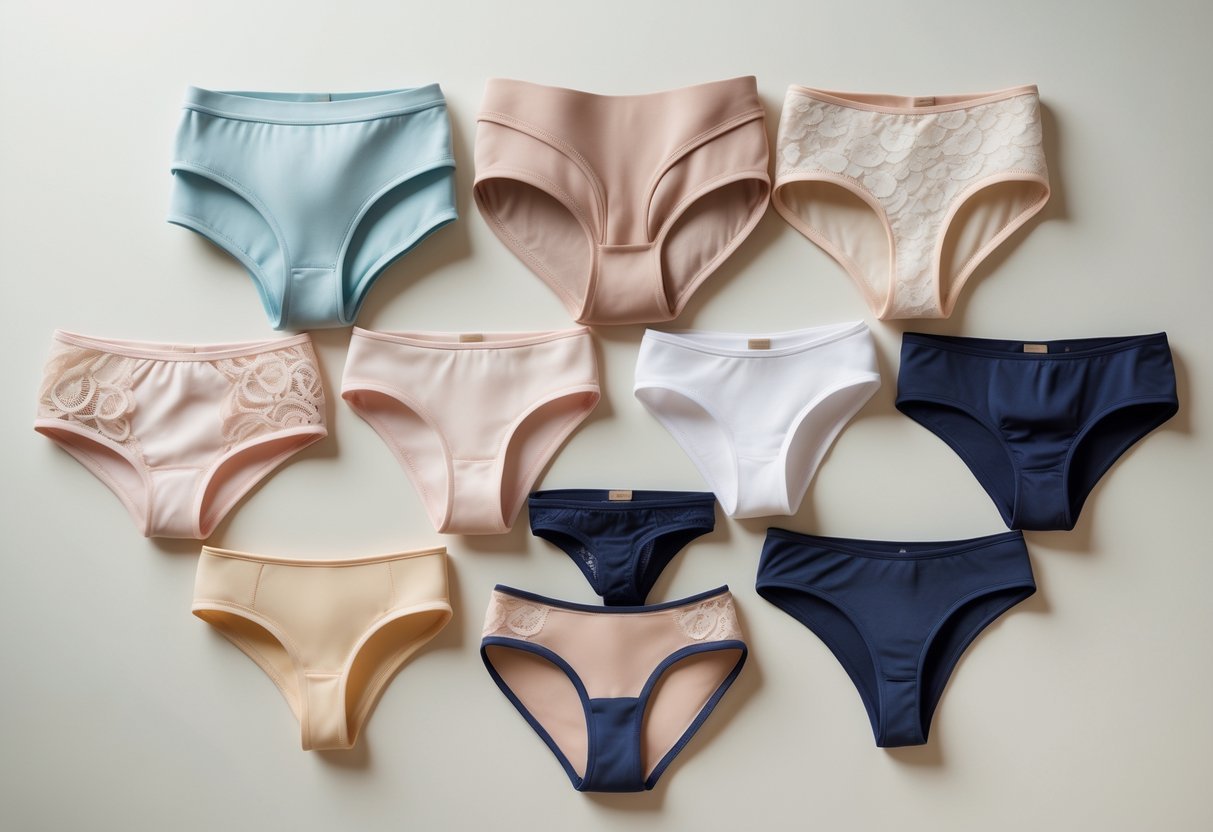
Understanding the variety of panties allows a person to choose underwear that matches their comfort, style, and the clothes they wear. This knowledge helps avoid discomfort and visible lines while providing the right support and fit.
1) Briefs
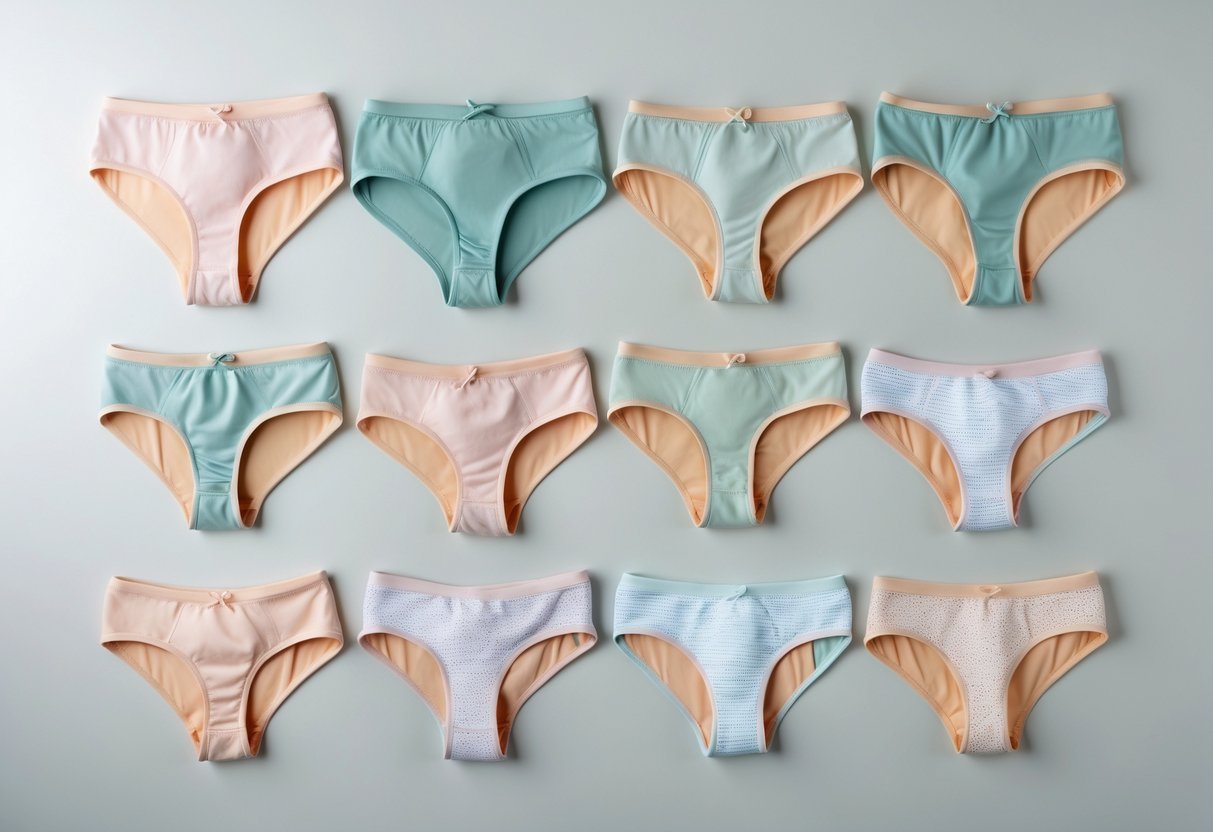
Briefs are one of the most classic underwear styles. They provide full coverage in the back and usually have a low-rise waistband. This makes them less likely to show above pants or skirts.
They have low-cut leg openings and a tapered front for a comfortable fit. Briefs offer good support and comfort, making them suitable for everyday wear.
This style works well with many outfits, including skirts, dresses, and jeans. People often choose briefs when they want reliable coverage without added bulk.
Briefs come in various fabrics, from cotton to synthetic blends. This allows wearers to pick options that match their preferences for softness and breathability.
2) Bikinis
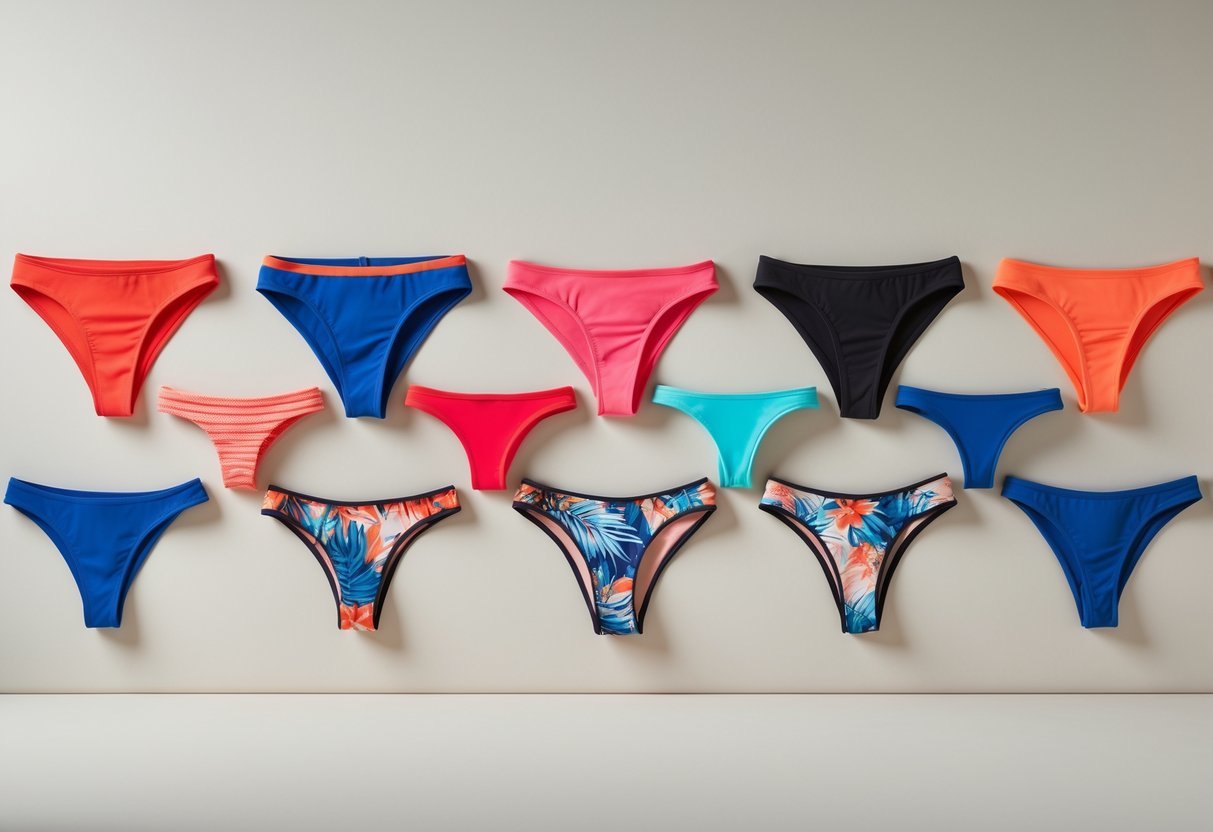
Bikini panties are a popular style known for their moderate coverage. They sit low on the hips and have higher cut leg openings. This design offers a balance between comfort and style.
They provide enough coverage in the back while remaining less full than briefs. Bikinis often feature a waistband that rests just below the natural waistline, making them a versatile option for many outfits.
This style comes in various fabrics and colors. Because of their fit, bikinis suit everyday wear and are comfortable for most body shapes.
Some bikini designs include string sides for a more delicate look. Overall, bikinis offer moderate support while maintaining a sleek appearance.
3) Boyshorts
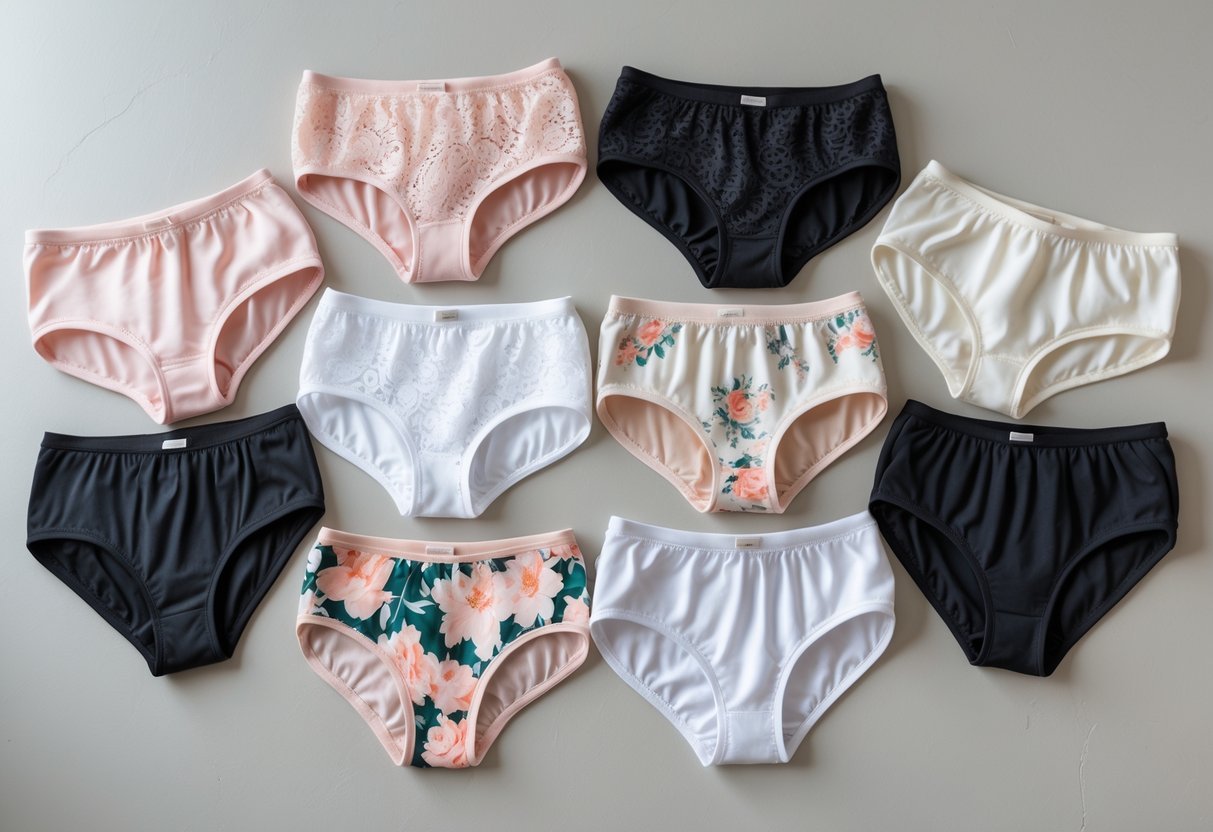
Boyshorts are a type of women’s underwear designed to resemble men’s boxer briefs. They have a low-rise waist that sits around the hips and provide full coverage on the back. The leg openings are cut straight across the thigh, offering more coverage than traditional panties.
They are popular for their comfort and style. The shape reduces visible panty lines, making them suitable to wear under many types of clothing. Boyshorts come in various fabrics such as cotton, lace, and microfiber, giving options for breathability or a more decorative look.
This type of underwear suits women who want support without sacrificing comfort. They work well for everyday wear and physical activities. Because of their coverage and fit, boyshorts are also a good choice for lounging and casual outfits.
4) Thongs

Thongs are a type of underwear that offers minimal coverage in the back. They are designed to reduce visible panty lines, making them a popular choice under tight or thin clothing.
There are several styles of thongs available. These include classic thongs, G-strings, and T-back designs. Each style varies in how much fabric is used and how it fits around the hips and backside.
Thongs come in different fabrics like cotton, lace, and seamless materials. This variety helps people choose thongs based on comfort and the type of outfit they wear.
Many people choose thongs for their sleek look and the way they sit under clothing. However, comfort levels can vary depending on the design and personal preference.
5) G-Strings

G-strings are a type of underwear known for their minimal coverage, especially in the back. They have a thin string that connects the front fabric to the waistband, offering nearly no coverage on the rear. This design helps to avoid visible panty lines under tight clothing.
They come in many materials like cotton, lace, and microfiber. This variety allows for different levels of comfort and style. G-strings can be used for everyday wear or special occasions, depending on the design.
Compared to thongs, G-strings usually have thinner sides and less fabric in the back. This makes them a popular choice for those seeking a very minimal and discreet underwear option. The triangular front piece provides just enough coverage while maintaining a sleek look.
6) Hipsters
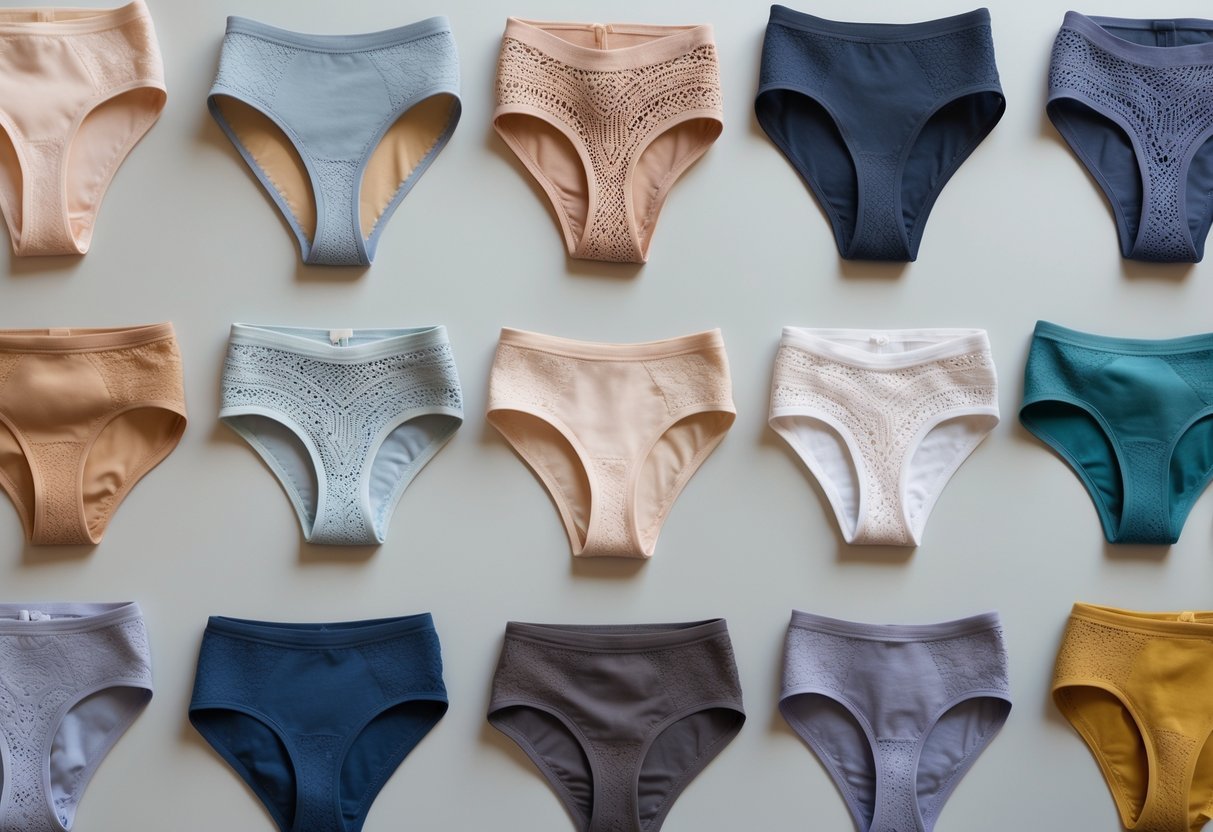
Hipsters are a popular type of underwear that sits low on the hips, below the natural waistline. They offer moderate coverage in the front and fuller coverage in the back. This makes them comfortable to wear daily.
The leg openings on hipsters are cut low, which means they cover more of the buttocks than some other styles like cheeky panties or thongs. This gives a balanced look between coverage and style.
Hipsters avoid visible panty lines under many kinds of clothing. This makes them a practical choice for both casual and semi-fitted outfits. They provide a snug and secure fit without feeling tight.
They fall between bikini panties and boyshorts in terms of fit and coverage. This middle ground helps many people find the right mix of comfort and appearance.
Fabric choices for hipsters vary, but cotton blends are common for breathability and softness. Women often choose hipsters when they want reliable comfort with a simple, classic look.
7) High-Waist Panties
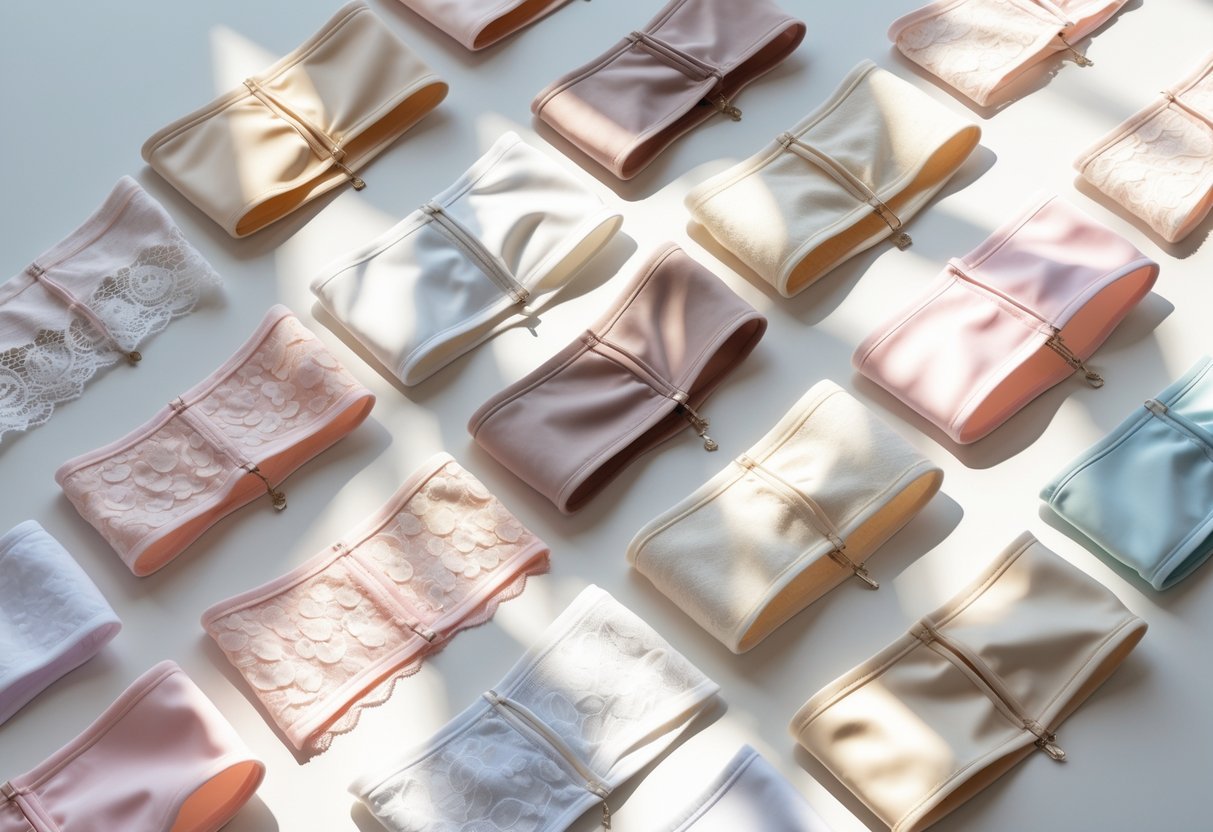
High-waist panties have a waistband that sits above the hips, often covering the belly button. This style offers more coverage than low-rise or mid-rise panties. They are designed to smooth the stomach area and can help create a flattering silhouette.
These panties come in many designs, including briefs, thongs, and bikini styles. The high waist can add a vintage look and provide gentle tummy control. Many people choose them for comfort and support during daily wear.
High-waist panties work well with body-conscious clothing because they prevent lines from showing. They also suit those who prefer a secure fit. From running errands to lounging at home, this type of underwear balances style and function effectively.
8) Seamless Panties

Seamless panties are designed without visible seams, making them smooth under clothing. They offer a clean look and reduce panty lines, which is helpful when wearing tight or thin fabrics.
These panties often use stretchy, soft materials for added comfort. Many people choose them for everyday wear or special occasions where visible lines would be distracting.
Seamless panties come in various styles, including thongs, briefs, and boyshorts. Their versatility allows them to match different outfits, from leggings to dresses.
Because of their smooth design, seamless panties can also provide a slight smoothing effect on the body. This makes them useful as a layering piece under form-fitting clothes.
Overall, seamless panties combine comfort, style, and function. They suit those who want underwear that stays invisible and feels comfortable all day.
9) Shapewear Panties
Shapewear panties are designed to provide a slimming and smoothing effect. They offer gentle to firm compression around the stomach, waist, and hips. This helps create a more streamlined silhouette under clothing.
These panties often come in high-waist or mid-rise styles. The high-waist versions provide extra coverage and support for the lower belly and waist area. They can help flatten the stomach and smooth any bumps or lines.
Many shapewear panties use stretchy but firm fabrics to hold the body comfortably while shaping it. They can lift and taper the hips and buttocks without feeling too tight. This makes them suitable for daily wear or special occasions.
Shapewear panties can be a good choice for those who want light compression without wearing a full body suit. They fit well under dresses, skirts, and pants while improving the overall look of the outfit.
10) Cotton Panties
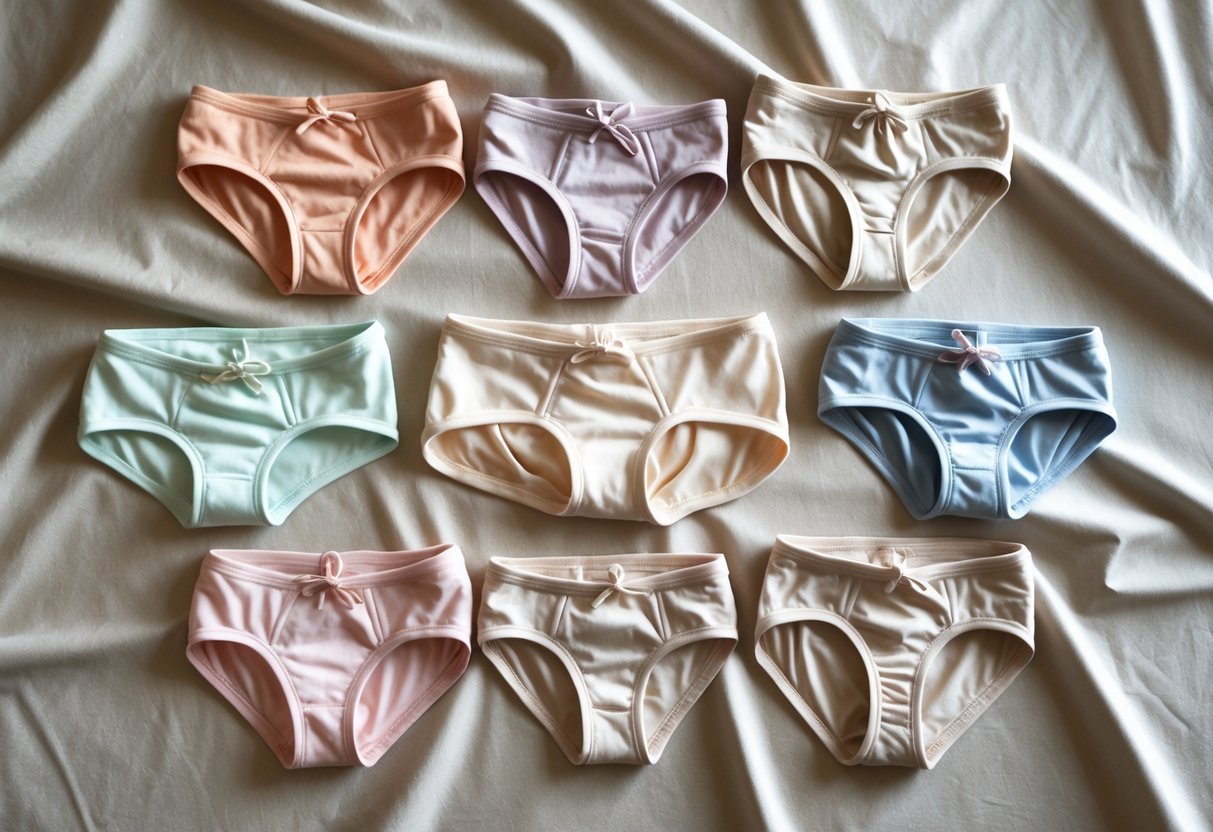
Cotton panties are made from natural cotton fabric. They are popular because of their breathability and softness. This fabric allows air to circulate, which helps keep the skin dry and cool.
These panties come in many styles, including briefs, bikinis, thongs, and boyshorts. They suit different body types and preferences. Cotton is a good option for daily wear because it reduces the risk of irritation and infections.
Their comfort makes them ideal for all seasons and climates. Cotton is gentle on sensitive skin, making it a preferred choice for people who need gentle fabric. Many brands offer cotton panties with simple to more stylish designs.
Choosing cotton panties can improve comfort during long days. They work well under various outfits since they tend to have less visible panty lines. Cotton panties provide a practical and reliable underwear option for everyday use.
Choosing the Right Panties
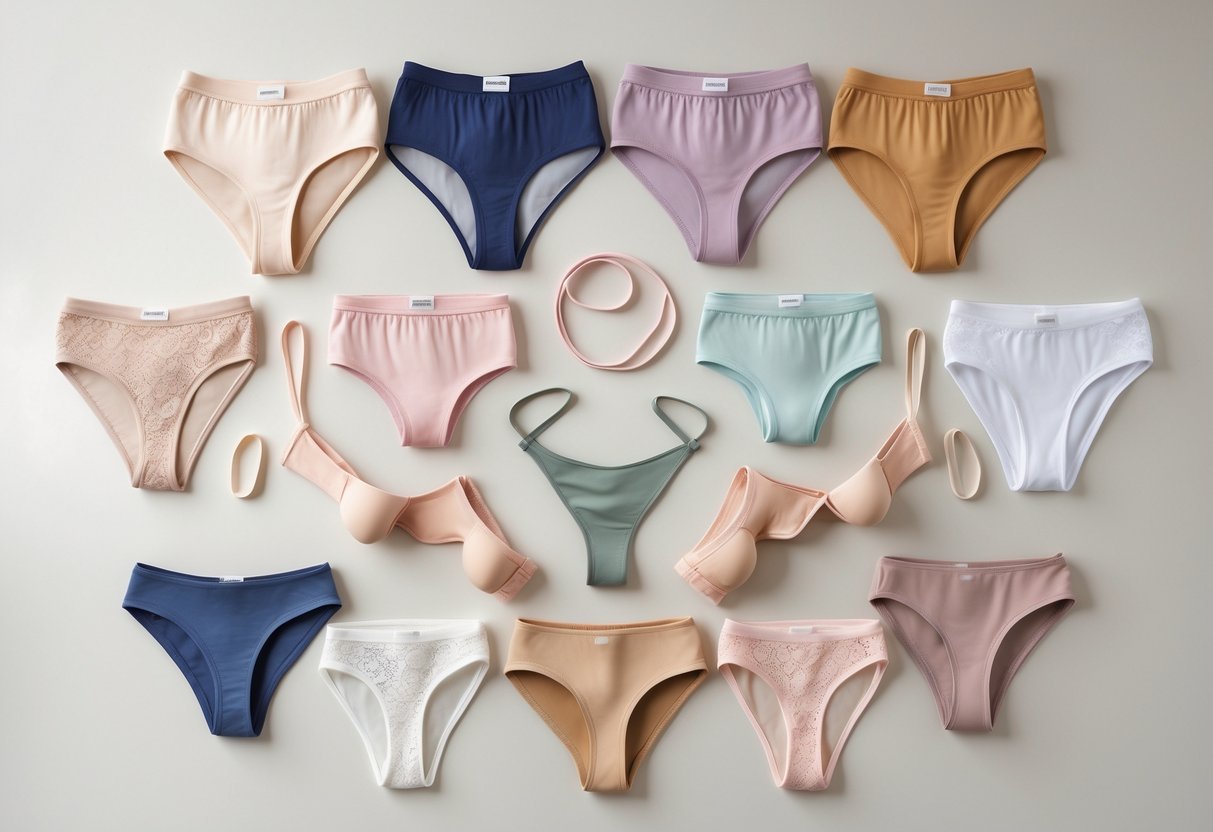
Picking the right panties depends on comfort, fit, and what clothes will be worn over them. Different materials, cuts, and styles affect how panties feel and look. It is important to match underwear choices to daily activities and outfit types for the best experience.
Factors to Consider for Comfort
Comfort mainly comes from fabric, fit, and rise. Cotton is soft and breathable, making it a good choice for everyday wear. Stretchy materials like spandex offer more flexibility but may trap heat.
The fit should not be too tight or loose. Tight underwear can cause discomfort or irritation. Loose panties might shift or bunch up, which feels unpleasant.
The rise—the height of the waistband—affects where underwear sits on the body. Low-rise works well with hip-hugging clothes, while high-rise offers more coverage and support. Seamless panties reduce visible lines and can increase comfort under tight clothes.
Selecting Panties for Different Outfits
Certain styles work better with specific outfits. For tight pants or leggings, thongs and seamless panties avoid visible panty lines. Boyshorts or briefs suit loose clothing, providing full coverage and added comfort.
Under skirts or dresses, light, breathable fabrics and simple designs help avoid bulkiness. For activewear, moisture-wicking materials and snug fits prevent chafing and keep skin dry.
Special occasions may call for different fabrics and looks, like lace for a dressy outfit. Choosing panties based on outfit type ensures both function and style are balanced.
Panty Fabrics Explained
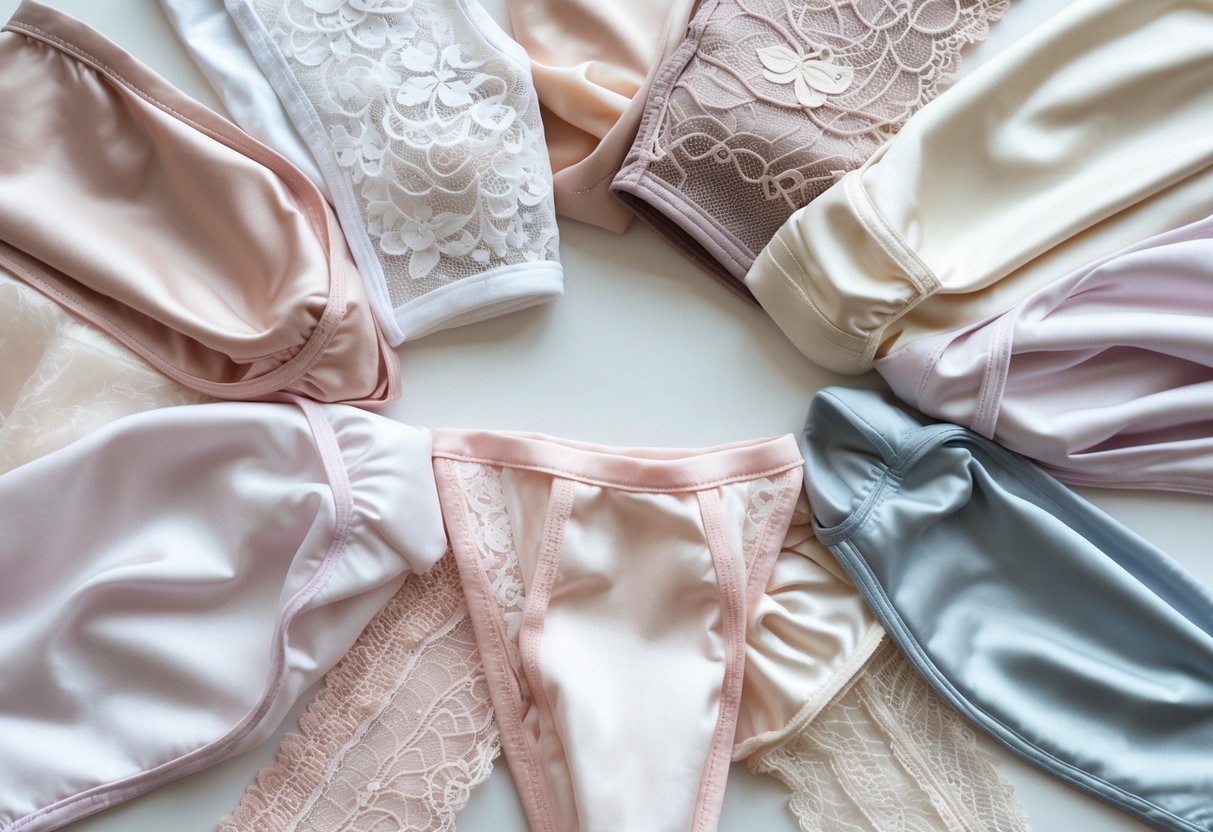
Choosing the right fabric for panties affects comfort, breathability, and durability. Some fabrics are better for sensitive skin, while others offer stretch and shape retention. The key differences lie in natural versus synthetic materials, each serving different needs.
Benefits of Cotton Panties
Cotton is a natural fiber known for its softness and breathability. It allows air to circulate, reducing moisture and preventing irritation or infections. These qualities make cotton panties a good option for everyday wear and sensitive skin.
Cotton absorbs sweat well and helps keep the area dry. It is also hypoallergenic, which means it’s less likely to cause allergic reactions. Many doctors recommend cotton underwear for women’s health.
Cotton panties tend to be easy to wash and durable. However, they may lose shape faster than stretchy fabrics. Still, their comfort and hygiene benefits are often prioritized.
Pros and Cons of Synthetic Materials
Synthetic fabrics like nylon, polyester, and spandex are popular for their stretch and durability. They can create a snug fit that holds shape well over time. These materials often blend moisture-wicking features to keep skin dry during activity.
However, synthetics may trap heat and moisture more than natural fibers. This can cause discomfort or increase the risk of irritation with long wear. Some people may experience allergic reactions to certain synthetic fabrics.
Synthetics dry quickly, making them a convenient choice for sports or travel. They are also lightweight and often blended with cotton to add comfort. Care instructions may be more specific to avoid damage during washing.
Frequently Asked Questions
Different panty styles offer varied coverage and shapes, affecting comfort and appearance. The fabric choice also plays a big role in breathability and fit. Knowing how to pick the right style and size for body shape and daily needs helps improve comfort and confidence.
What are the main styles of women’s underwear?
The most common styles include briefs, bikinis, boyshorts, thongs, and G-strings. Briefs offer full coverage and support. Bikinis sit low on the hips with moderate coverage. Boyshorts cover the hips and thighs more fully. Thongs and G-strings provide minimal rear coverage for no visible panty lines.
How does the cut of a panty affect comfort and style?
A higher cut can feel less restrictive and prevent chafing. Low-rise cuts fit better with low-waisted pants but may expose more skin. Full-coverage cuts provide more support and can feel more secure. Tight, minimal cuts like thongs reduce panty lines but may feel less comfortable for some.
What considerations should be taken into account when choosing material for underwear?
Natural fabrics like cotton offer breathability and are good for everyday wear. Synthetic fabrics like nylon and spandex provide stretch and shape retention but may trap heat. Seamless designs often use softer materials to reduce irritation. The right fabric depends on activity level and skin sensitivity.
Which types of underwear are best for various body shapes?
For pear-shaped bodies, boyshorts or briefs with full coverage balance the hips. Athletic shapes often benefit from bikinis or low-rise briefs. Thongs suit many shapes for smooth lines under tight clothes. Comfort and fit are more important than style trends for any shape.
What is the difference between seamless and cotton panties?
Seamless panties are designed without visible stitching, reducing irritation and panty lines. They usually use synthetic fibers and stretch materials. Cotton panties are made mainly from cotton fabric, which is breathable and gentle on the skin but may have visible seams and less stretch.
How do you determine the right size when shopping for women’s underwear?
Measure the waist and hips with a soft tape measure. Check the brand’s size chart since sizes vary. The right size should feel snug but not tight, allowing movement without digging into the skin. Trying different styles helps find what fits best for comfort and shape.


